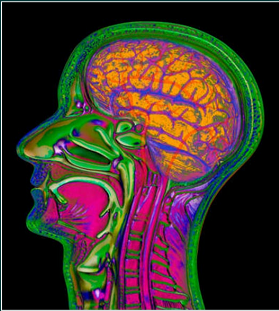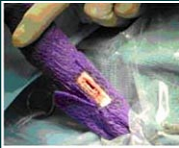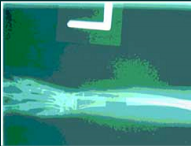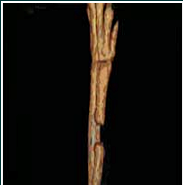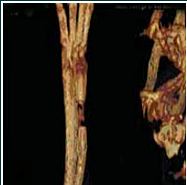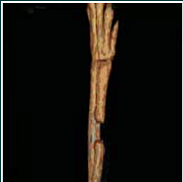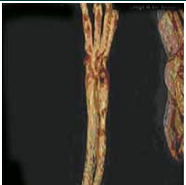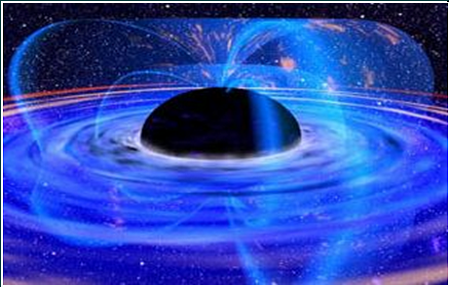The issue of pain treatment is an extremely urgent health and socio-economic problem. Pain, in acute, recurrent and chronic forms, is prevalent across age, cultural background, and sex, and costs North American adults an estimated $10,000 to $15,000 per person annually. Estimates of the cost of pain do not include the nearly 30,000 people that die in North America each year due to non-steroidal anti-inflammatory drug-induced gastric lesions. 17% of people over 15 years of age suffer from chronic pain that interferes with their normal daily activities. Studies suggest that at least 1 in 4 adults in North America is suffering from some form of pain at any given moment. This large population of people in pain relies heavily upon the medical community for the provision of pharmacological treatment. Many physicians are now referring chronic pain sufferers to non-drug based therapies, that is, "Complementary and Alternative Medicine," in order to reduce drug dependencies, invasive procedures and/or side effects. The challenge is to find the least invasive, toxic, difficult and expensive approach possible.
The ability to relieve pain is very variable and unpredictable, depending on the source or location of pain and whether it is acute or chronic. Pain mechanisms are complex and have peripheral and central nervous system aspects. Therapies should be tailored to the specifics of the pain process in the individual patient. Psychological issues have a very strong influence on whether and how pain is experienced and whether it will become chronic. Most effective pain management strategies require multiple concurrent approaches, especially for chronic pain. It is rare that a single modality solves the problem.
Static or electromagnetic fields have been used for centuries to control pain and other biologic problems, but scientific evidence of their effect had not been gathered until recently. This review explores the value of magnetic therapy in rehabilitation medicine in terms of static magnetic fields and time varying magnetic fields (electromagnetic). A historical review is given and the discussion covers the areas of scientific criteria, modalities of magnetic therapy, mechanisms of the biologic effects of magnetic fields, and perspectives on the future of magnetic therapy.
In the past few years a new and fundamentally different approach has been increasingly investigated. This includes the use of magnetic fields (MF), produced by both static (permanent) and time-varied (most commonly, pulsed) magnetic fields (PEMFs). Fields of various strengths and frequencies have been evaluated. There is as yet no "gold standard". The fields selected will vary based on experience, confidence, convenience and cost. Since there does not appear to be any major advantage to any one MF application, largely because of the unpredictability of ascertaining the true underlying source of the pain, regardless of the putative pathology, any approach may be used empirically and treatment adjusted based on the response. After thousands of patient-years of use globally, there very little risk has been found to be associated with MF therapies. The primary precautions relate to implanted electrical devices and pregnancy and seizures with certain kinds of frequency patterns in seizure prone individuals.
Magnetic fields affect pain perception in many different ways. These actions are both direct and indirect. Direct effects of magnetic fields are: neuron firing, calcium ion movement, membrane potentials, endorphin levels, nitric oxide, dopamine levels, acupuncture actions and nerve regeneration. Indirect benefits of magnetic fields on physiologic function are on: circulation, muscle, edema, tissue oxygen, inflammation, healing, prostaglandins, cellular metabolism and cell energy levels.
Most studies on pain use subjective measures to quantitate baseline and outcome values. Subjective perception of pain using a visual analogue scale (VAS) and pain drawings is 95% sensitive and 88% specific for current pain in the neck and shoulders and thoracic spine.
Measured pain intensity (PI) changes with pain relief and satisfaction with pain management. A 5%, 30%, and 57% reduction in PI correlated with "no," "some/partial," and "significant/complete" relief. If initial PI scores were moderate/severe pain (NDS > 5), PI had to be reduced by 35% and 84%, to achieve "some/partial" and "significant/complete" relief, respectively. Patients in less pain (NDS < or = 5) needed 25% and 29% reductions in PI. However, relief of pain appears to only partially contribute to overall satisfaction with pain management.
Several authors have reviewed the experience with PEMFs in Eastern Europe and the West. PEMFs have been used extensively in many conditions and medical disciplines. They have been most effective in treating rheumatic disorders. PEMFs produced significant reduction of pain, improvement of spinal functions and reduction of paravertebral spasms. Although PEMFs have been proven to be a very powerful tool, they should always be considered in combination with other therapeutic procedures.
Since the turn of this century, a number of electrotherapeutic, magnetotherapeutic and electromagnetic medical devices have emerged for treating a broad spectrum of trauma, tumors and infections with static and PEMFs. Their acceptance in clinical practice has been very slow in the medical community. Practitioner resistance seems largely based on confusion of the different modalities, the wide variety of frequencies employed (from ELF to microwave) and the general lack of understanding of the biomechanics involved. The current scientific literature indicates that short, periodic exposure to pulsed electromagnetic fields (PEMF) has emerged as the most effective form of electromagnetic therapy.
The ability of PEMFs to affect pain is dependant on the ability of PEMFs to positively affect human physiologic or anatomic systems. Research is showing that the human nervous system is strongly affected by therapeutic PEMFs. Behavioral and physiologic responses of animals to static and extremely low frequency (ELF) magnetic fields are affected by the presence of light. Light strengthens the effects of PEMFs.






